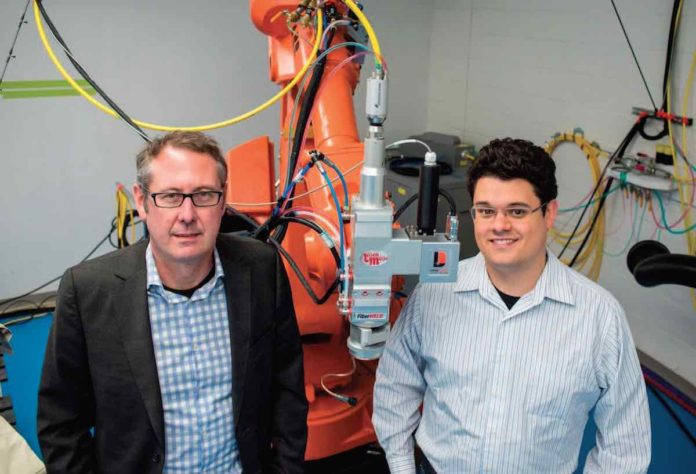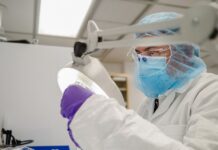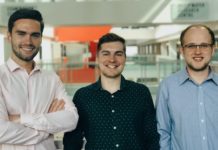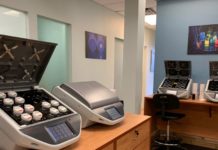“Starting a business is relatively easy here.”
That’s not typically what you’d expect an entrepreneur to say. We expect tales of struggle and heartbreak. But Roger Bowes should know. As the CEO of Laser Depth Dynamics, he and cofounder Dr. Paul Webster have taken their company from not much more than a rough design to a thriving enterprise in just about four years.
Back in 2012, Bowes was looking for new opportunities. He’d already launched one startup, ESG Solutions, and then stepped away. Interested in seeing what might be out there that he could get involved with, he approached PARTEQ Innovations, the organization developed by Queen’s University to commercialize university research. “I wondered if anything interesting was going on.”
As it just so happened, there was. PARTEQ had been working with a young PhD student named Paul Webster. He along with two others, James Fraser, his thesis supervisor in the department of physics and Victor Yang, a doctor working in Toronto, had developed a laser measuring system. The system had developed out of work that Fraser had been doing in medical imaging involving lasers. Webster saw that there might be applications for it in industry too, measuring the depth of cuts and drilling. Realizing the opportunity, Webster knew he had to move quickly to commercialize it and approached PARTEQ Innovations to help them. “By the time I met them,” says Bowes, “they had already gotten pretty far – patents and a prototype – and Paul was approaching potential customers.”
The commercial application they had settled on was in laser welding. Energy efficient, fast, and highly accurate, it produces a very narrow, but strong weld. For that reason, it is extensively used in manufacturing automobile transmissions, which require very precise tolerances, and fuelling components, which experience very high pressures. In these applications, you don’t want a weld to fail – it could be potentially fatal for a car owner. But the very speed of laser welding makes quality monitoring difficult.
Quality control traditionally consisted of inspecting sample parts manually and with destructive testing. When a defectively welded component was discovered, the entire production line had to be stopped, and the piece cut open to discover what had gone wrong. The process was time-consuming and highly random – no manufacturer could destructively test all of their production to find a single defect.
Laser Depth Dynamics’ inline coherent imaging technology helps overcome these challenges. For example, combined with the laser system on a robot, LDD’s technology can accurately measure the depth of precision-drilled holes and laser welds alike. Furthermore, the tool can measure before, during and after the laser process in a single presentation of the part, saving valuable cycle time and shop floor space. The result is more accurate welds, fewer defects and, ultimately, increased safety.
Laser Depth Dynamics’s customers include major players in the automotive sector and the aerospace industry largely in the United States, but also in Europe, Asia and to some extent Canada. They are manufacturers of transmissions, pumps, turbines – basically anything that needs fine welds consistently created. The company has grown to ten employees and business has doubled in the last ten years. In October 2016, the company moved into a new home, which, says Bowes “has allowed us to set up a full laser applications lab and gives us the space we need to continue to grow.” And that new home, it should be noted, is in Kingston.
“This is a great place to do something like this,” says Bowes. He cites the help they have received from PARTEQ and the Kingston Economic Development Corporation, as well as the benefits of Ontario’s entrepreneurial ecosystem and the government’s R&D tax credits. Rents are good too and Queen’s is our main recruiting ground. When we need anyone, we go back to the lab where Paul did his research. They are all trained and ready to go. They are as good as anything coming out of the US universities.
“It would not make sense to leave. We couldn’t do this anywhere else.”
















